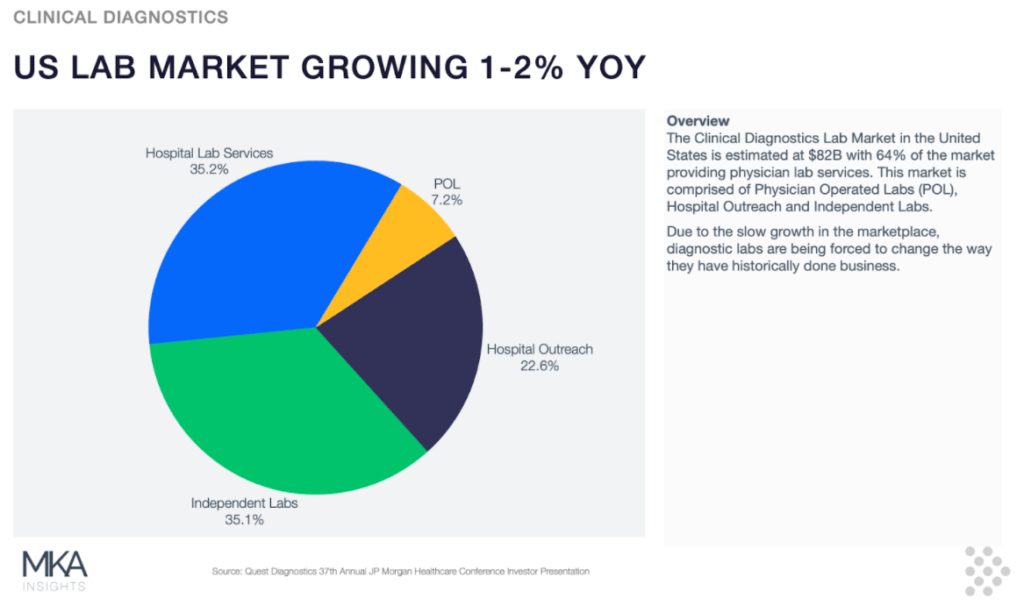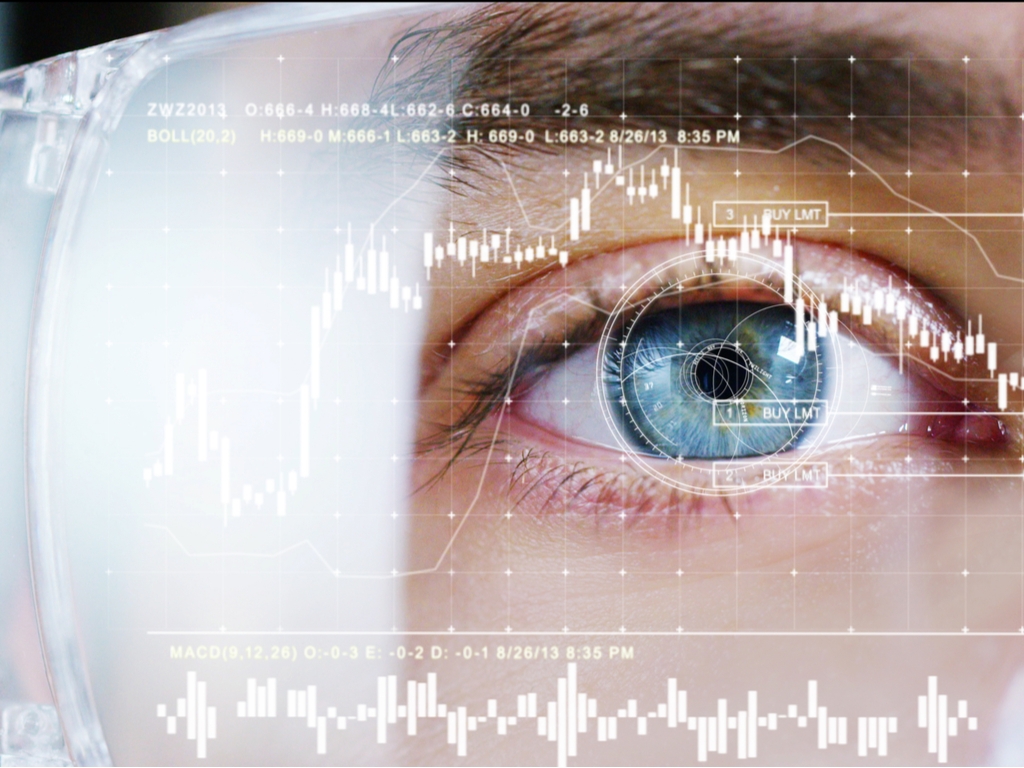Home > Insights > Market Research & Trend Analysis > Trends for clinical diagnostics market
Trends for the Clinical Diagnostics Market
May, 2020

1. What is the Market for Clinical Diagnostics?
According to Quest Diagnostics (as represented in their 37th Annual JP Morgan Healthcare Investor Conference), the market for clinical diagnostics is comprised of hospital lab services, point of lab services, hospital outreach and independent labs. The largest of these segments is the hospital lab and independent lab services, each comprising approximately 35% of the overall US lab market for a combined market share of 70%.

2. What are Clinical Lab Market Trends?
While there are several market trends within this industry, there is one macro trend that appears to be shaping the industry as a whole. And that is the fact that the Patient continues to play an increasing role in his/her own patient care. Understanding and knowing this fact is critical for all healthcare providers in adjusting their service delivery and care models to ensure that care is a bilateral conversation.
Consequently, the industry has responded to this shift in patient/consumer behavior by making the following adjustments to their business model:
- Increased Digital Engagement. Helps to improve the customer experience through innovative technologies that enable customers to be more engaged in patient care.
- Operational Cost-Cutting. Identifying ways to reduce waste and expand margins.
- Continued Focus on Value-Based Care. Continuing to transition to value-based care to improve outcomes, largely driven by the reimbursement landscape (and legistlation).
- Growth via Acquisitions. Expanding capabilities through acquisitions of labs that provide access to new patient care models as well as footprint expansions into new geographies (ie. Walmart & Safeway).
3. What are the Market Drivers Fueling Growth for the Clinical
Diagnostics Market?
- Liquid Biopsies. Unlike traditional biopsies which require access to tissue to conduct testing, liquid biopsies rely on organic biofluids such as blood, saliva, and cerebral spinal fluid (to name a few) for access to biomarkers that can inform doctors and patients on what underlying health/disease states look like within a patient. The research and discovery in liquid biopsies has made it possible to shift the care model from seeking to harvest tissue as a first step to shifting potentially to a last resort. Large implications for transplant monitoring, brain biopsies and painful prostate biopsies.
- Biomarkers. The discovery of new biomarkers (independent) of the advent of liquid biopsies is fueling the clinical diagnostics marketplace. However, the combination of new biomarkers and the availability of liquid biopsies together is fueling the pace of clinical diagnostics.
4. What are the Growth Areas within the Clinical Diagnostics Market?
- Companion Diagnostics. CDx or companion diagnostics allow doctors and patients to better understand if therapies will respond for specific patients. The growth in CDx is often closely linked to “precision medicine” or “personalized medicine”.
- Non-Invasive Pre-natal Testing (NIPT). A focus area for a long time is the need to understand the health of developing fetuses without engaging in invasive testing. The increasing focus on liquid biopsies and new biomarkers is fueling the demand for NIPT.
- Direct-to-Consumer Testing. As patients become more active in understanding genetic variations, progeny and legacy – the market for direct-to-consumer (DTC) testing continues to grow.
By: Kiran Chin


